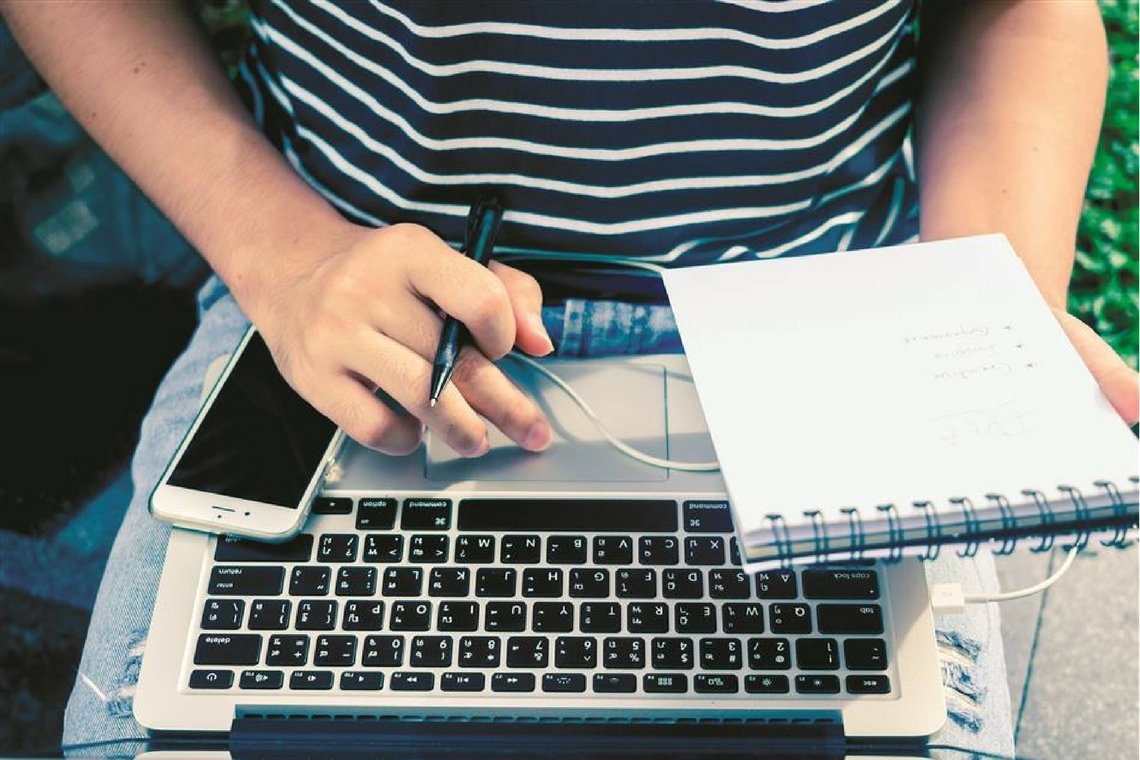Multitasking’s Students
Students can truly think they are focusing on their studies when they actually aren't. For example, you might have a student object to a bad test grade by saying "I studied for ten hours yesterday. How could I possibly have done so badly?
Of course, your first thought might be: "Maybe you weren't studying so much as you were cramming for those ten hours. Because if those ten hours formed the bulk of your studies, it's little wonder you didn't do well. Your second thought might be, "What else did you have going on while you were studying?" Because the reality is, that staying completely focused for ten hours is difficult for even the most seasoned adult professional. Students often don't realize how distracted they can be, maybe half-listening to the television or to music, or to other students, or maybe even dozing off every now and again.
It’s common for students to watch TV, listen to music, text friends, or check social media while doing homework. Instead of effectively juggling the tasks, students’ minds become distracted and can actually reduce productivity by up to 40%.
What is Multitasking?
When we discuss the effect of music or other distractions on our ability to study, what we're really talking about is a form of multitasking. Students often believe that multitasking makes them more efficient in their studies. So it's important for you to have a sense of what multitasking really is, so you can be a better coach for your student's learning. Multitasking is when one person handles more than one task at the same time. Examples include chewing gum while walking, sending e-mails during a meeting, and talking on the phone while watching television
There are actually two forms of multitasking:
Task switching and dual tasking. Task switching" means that you put your attention on one thing at first. Then you shift it to another thing. It's like having a tightly focused flashlight and you move the beam from one object to another.
Dual tasking," on the other hand, is when attention is divided among multiple things at once. So it's like you've expanded the beam of the flashlight. You can see several things, but not as well.
There's yet a third type of multitasking called "continuous partial attention." This is like shining your flashlight rapidly around the scene. You can see a lot that way, but only superficially. Speed reading might be considered continuous partial attention. You glance through the pages, but not really taking the material in with any depth.
A typical example of task switching is when you try to drive at the same time that you're looking at your cell phone. This is, needless to say, a bad idea because each task needs some of the same vision resources. However, it's usually okay to drive and listen to music because the two tasks are tapping into largely different neural resources: those for vision and those for auditory processing. And listening to music can usually be done without demanding higher-level cognitive resources.
The more a student's task switches, hopping from their biology textbook to sending a text message, or listening more closely to the radio in the background, for example, the less productive their studies often are.
Each time the brain switches from one topic to another, it comes at a cost. One study showed that cognitive performance fell by some 30% when participants switched between tasks instead of completing one task before moving on to the next. But at the same time, just as lifting weights can only go on for so long, one can only focus for so long without needing a bit of mental relaxation— more on this next week.
CAN MULTITASKING EVER BE BENEFICIAL?
While the benefits of multitasking for students are limited, effective task switching can help improve productivity. When done right, switching tasks can help keep the brain fresh. If a student is switching tasks frequently (i.e. every few minutes), his or her brain has a difficult time refocusing and can tire easily. However, working too long on one task can have the same effect. Setting a goal and switching tasks when students have reached that goal makes work more productive and helps students’ brains stay on task longer. It’s the happy medium between rapidly going back and forth between tasks and trying to focus on one task for too long.
The ability of learners to debate and fining excuses for something they enjoy is amazing, you find them just debating and trying to prove that what they are doing is no problem. How can you teach your students about the value of focusing on a task without being distracted? Ask them to count to 10 like this 1,2,3,4,5,6,7,8,9,10.
Then ask them to say the letters from A to G. Like this A B C D E F G.
Then ask them to alternate between the two tasks, like this 1 A 2 B 3 C 4 D 5 E, and so on. The higher the students go, the more difficult they can find the task— a perfect example of why focusing on a task without distraction can be so helpful.
Resources:
https://www.coursera.org/lecture/uncommon-sense-teaching/8-the-vital-importance-of-focus-xQqz7
https://gradepowerlearning.com/effects-of-multitasking-on-learning/
Multitasking: Helpful or Harmful: https://www.mheducation.com/highered/insights-ideas/5-tips-to-reduce-your-work-stress.html



